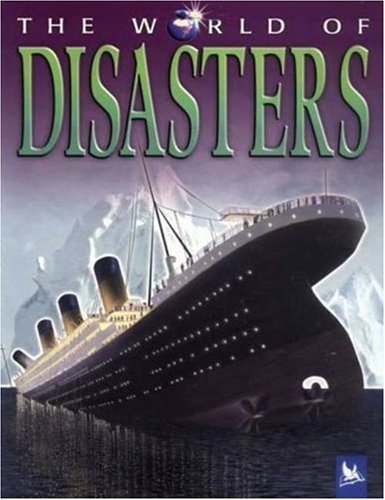-
The Technology of World War I
Stewart Ross
Library Binding (Raintree, Feb. 3, 2003)The Technology of World War I explores the dramatic developments in military technology during World War I. It shows how the Industrial Revolution changed the tools of war, from the production of high-grade iron and steel for warships to the lethal products created by the chemical industry. This book also examines how the superiority of defensive weapons led to the lack of movement and resulting stalemate on the front lines during World War I. It looks at the horrors of trench warfare and considers how the combination of larger armies and improved weaponry was to lead to unprecedented numbers of casualties. Finally, it discusses the far-reaching effects of the war's technological advances in medicine, transportation, and communications and looks at the cost of the war-- in financial and human terms-- to the countries involved. Z
Z
-
Bees of the World
Christopher O'Toole, Anthony Raw
Hardcover (Facts on File, Feb. 1, 2004)Covering all aspects of apian life and natural history, this illustrated guide demonstrates the wide diversity of these insects.
-
Lizards of the World
Chris Mattison
Hardcover (Facts on File, Feb. 1, 2004)Human interest in lizards is not new. These reptiles have been the subject of superstition and speculation for thousands of years, and their remarkably diverse forms, colors, and behavior continue to fascinate us today. We know comparatively little aboutlizards, however, and the data produced by increasing scientific study is often impenetrable or inaccessible to the interested general reader. Written as an introduction to the natural history of lizards, this book helps to answer the many questions thatboth amateur and professional naturalists ask about these animals. The first seven chapters cover the origins, form, function and color, environment, feeding, defense, reproduction, movement, and distribution of lizards -- from tiny tropical geckos to the huge Komodo dragon. The author also discusses lizards in captivity and their relationship to humans and describes the entire range of the lizard families. The book concludes with a chapter on the curious group of burrowing "worm lizards," the amphisbaenians. The highly readable and informative text is beautifully illustrated with line drawings and superb black-and-white color photographs of the spectacularly varied lizard families.
-
The World of Ships
Philip Wilkinson
Paperback (Kingfisher, Aug. 18, 2005)The World of Ships is divided into four section--Trade and Discovery, Ships of War, Peopling the World, and Discovering Ships. Each section includes several page spreads focusing on specific themes and topics related to ships and seafaring. A glossary and an index are also included to build vocabulary and research skills. R
R
-
Seals and Sea Lions of the World
Nigel Bonner
Hardcover (Facts on File, Feb. 1, 2004)The 17th title in the "Of the World" series, this volume covers seals, sea lions and walruses. Information includes the distribution and zoology of the various species, and how they interaction with humans.
-
Crocodiles & Alligators of the World
David Alderton, Bruce Tanner
Hardcover (Facts on File, Feb. 1, 2004)Perceived for too long as predatory killers, crocodilians face their gravest danger--extinction--with little human help and sympathy. As this volume proves, alligators and crocodiles can be extremely fascinating. Examine this creature's anatomy to see why it makes such a fine hunter: its almost fully submerged body remains nearly invisible, its slit eyes help it see in the dark and judge distance precisely, and its tough skin protects it against the salt water. Many societies viewed crocodiles with awe because of their power and size, and even made them a part of their folklore and religion. Information on origins, evolution and distribution, courtship, reproduction, and many individual species paint a thorough portrait. Maps of their habitats, disappearing swiftly because of environmental damage, trace their presence worldwide, and excellent color photos bring these sometimes scary reptiles up close and personal. Blandford 192 pages, 40 color illus., 80 b/w illus., 6 x 9.
-
Foxes, Wolves and Wild Dogs of the World
David Alderton, Bruce Tanner
Hardcover (Facts on File, Feb. 1, 2004)A guide to the wild members of the canine family, including foxes, wolves, coyotes and dingos. Sections include: classification and species; distribution and habitat; physiology and zoology; breeding and reproduction; food and feeding; behaviour and life cycles; and interaction with humans.
-
Primates of the World
Rod Preston-Mafham, Ken Preston-Mafham
Hardcover (Facts on File, March 1, 2003)Lemurs, monkeys, and apes: they're man's closest relatives, and their habitats are swiftly disappearing. See how they live in the wild, rear their young, establish social systems, and even communicate with each other.
-
Bees of the World
Christopher O'Toole, Anthony Raw
Paperback (Blandford Pr, April 1, 1999)Covering all aspects of apian life and natural history, this illustrated guide demonstrates the wide diversity of these insects.
-
The World of Disasters
Ned Halley
Paperback (Kingfisher, Aug. 18, 2005)The World of Disasters is divided into three sections--Natural Disasters, Man-Made Disasters, and Future Disasters. Each section includes several page spreads focusing on specific themes and topics related to the relevant catastrophe. A glossary and an index are also included to build vocabulary and research skills. V
V
-
Insects of the World
Anthony Wootton
Hardcover (Facts on File, March 1, 2003)They make up three-quarters of the world's living creature, and that's counting only the 800,000 types we know. Though many people feel we're already too well acquainted with insects, by pollinating plants, producing honey and silk, and acting as monitors of pollution they're beneficial to us. Here you'll encounter -- from a safe distance! -- armies of ants, magnificently hued butterflies, shining silverfish, colorful tree-hanging moths, fierce yellow assassin bugs, blue weevils, and many more in this thriving world.
-
World War I: Armistice 1918
Reg Grant
Library Binding (Raintree, May 1, 2001)The armistice signed in November 1918 signaled the end of World War I. It can be regarded as a turning point in the history of the 20th century. Why did Germany sign the armistice and agree to the harsh terms imposed by the Versailles Treaty? How did these agreements change the social and political structure of Europe? How do we remember those who fought and died in World War I? Armistice 1918 carefully examines these important questions and covers the consequences of World War I on a global scale: the Russian revolution, the rise of fascism, and economic hardship in Britain and Germany. Y
Y